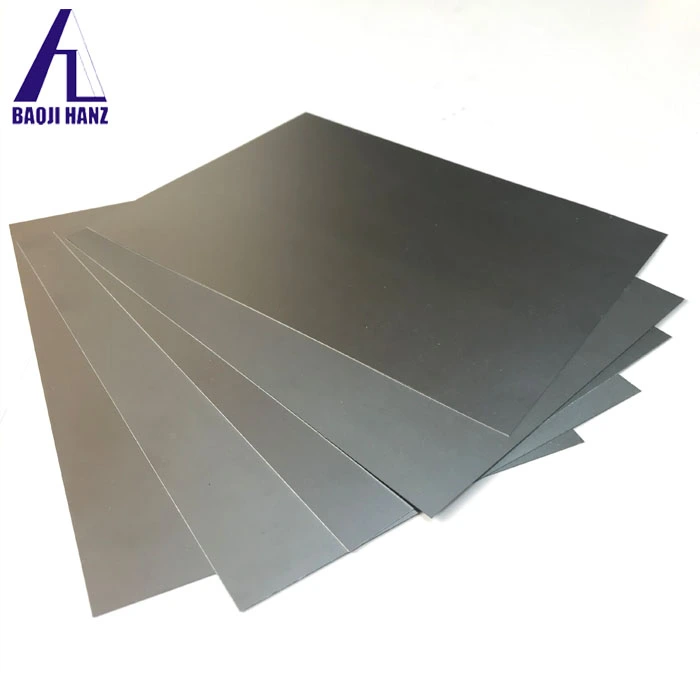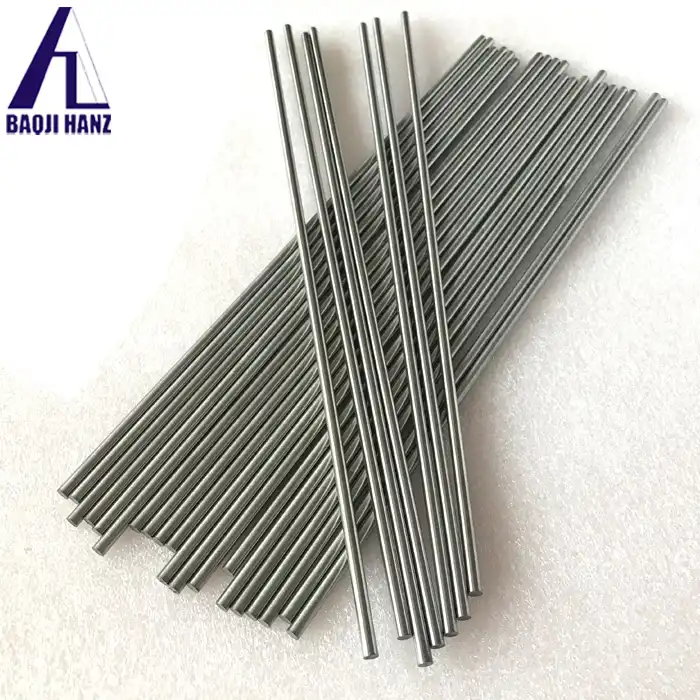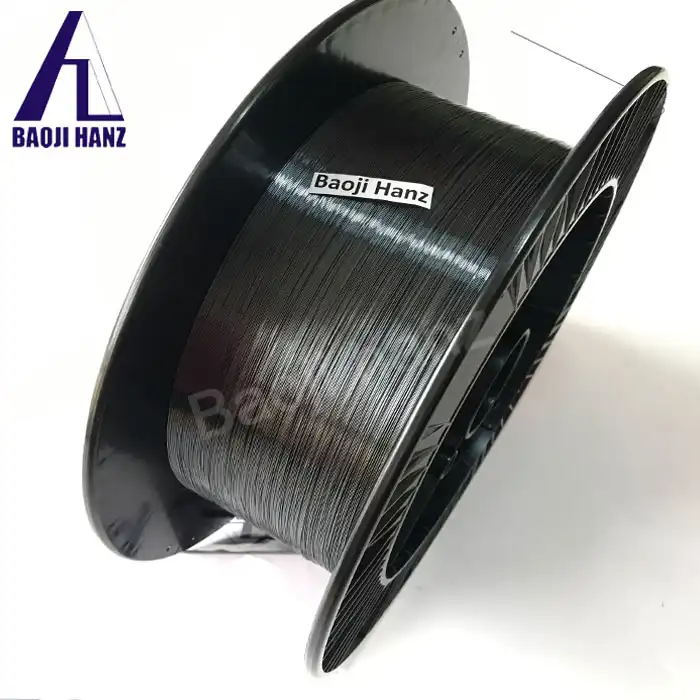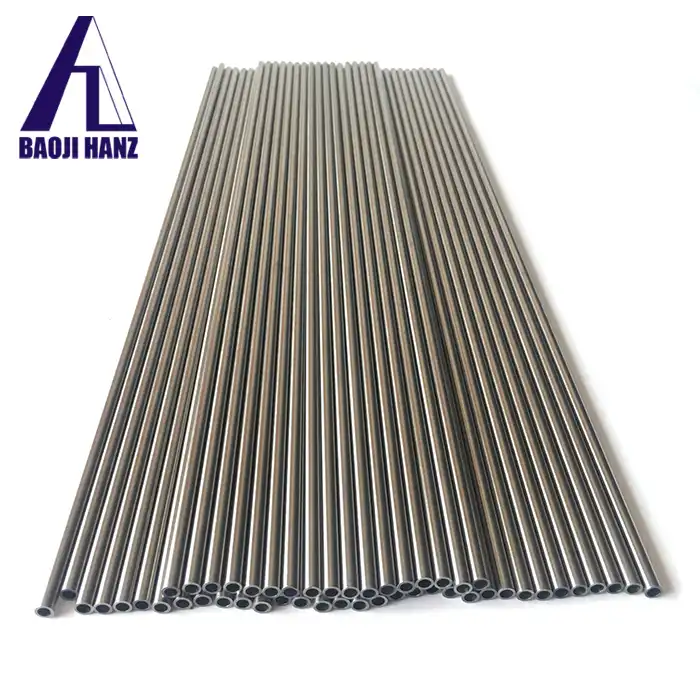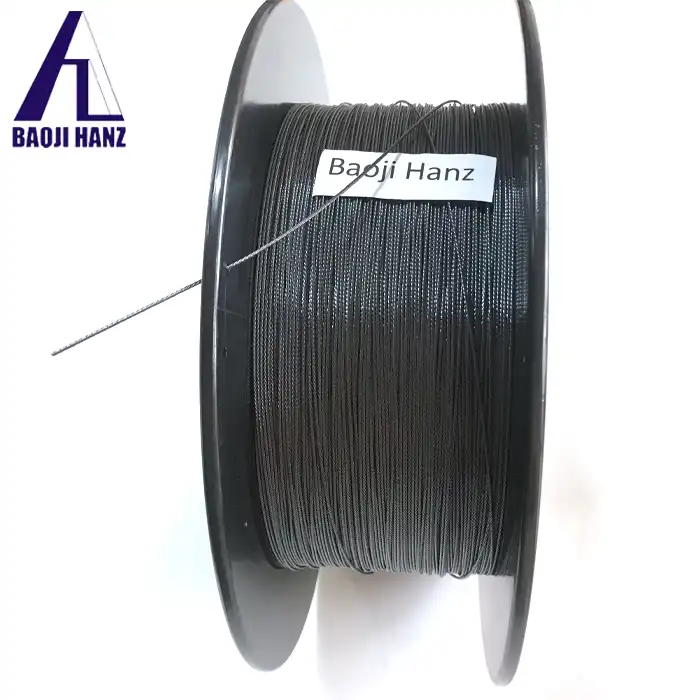What is a Nickel Titanium Stent Tube Made of?
2025-05-09 19:56:22
Nickel Titanium Stent Tubes are advanced medical devices fabricated from nitinol, a remarkable shape memory alloy composed primarily of nickel and titanium. These specialized tubes represent a revolutionary development in medical implant technology, combining unique material properties that make them ideal for vascular and non-vascular applications. The composition of Nickel Titanium Stent Tubes typically features a nearly equiatomic mixture of nickel (approximately 55-56%) and titanium (approximately 44-45%), with precise ratios that can be customized to achieve specific transformation temperatures and mechanical properties. This carefully engineered alloy provides the perfect balance of biocompatibility, corrosion resistance, and mechanical performance required for medical implants, allowing these stent tubes to function effectively within the human body while maintaining structural integrity under physiological conditions.
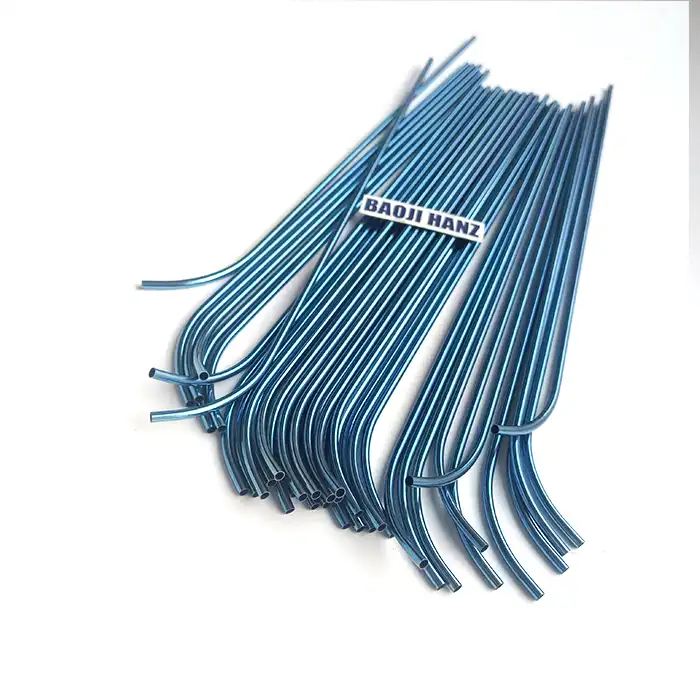
Composition and Material Properties of Nickel Titanium Stent Tubes
Chemical Composition and Atomic Structure
Nickel Titanium Stent Tubes are primarily made from nitinol, an equiatomic or near-equiatomic alloy of nickel and titanium. The precise ratio of these elements is crucial as it directly influences the material's transformation temperatures and mechanical behavior. Typically, these stent tubes contain approximately 55-56% nickel and 44-45% titanium by weight, though this ratio can be adjusted during manufacturing to achieve specific performance characteristics. The unique atomic arrangement of nickel and titanium atoms in the crystal lattice enables the material's remarkable properties. At higher temperatures, nitinol adopts an austenite crystal structure (cubic), while at lower temperatures, it transforms to a martensite phase (monoclinic). This atomic-level transformation is what enables Nickel Titanium Stent Tubes to exhibit their distinctive shape memory and superelastic behaviors. The material's density of approximately 6.45 g/cm³ makes it lighter than many alternative stent materials while maintaining excellent strength properties. The controlled composition of these tubes is essential for medical applications, where precise performance parameters are required for patient safety and device efficacy. Baoji Hanz Metal Material Co., Ltd. employs sophisticated metallurgical techniques to ensure consistent composition and purity in their Nickel Titanium Stent Tubes, resulting in predictable and reliable performance in clinical settings.
Thermal Characteristics and Phase Transformation
The thermal behavior of Nickel Titanium Stent Tubes is one of their most valuable attributes, characterized by specific transformation temperatures that dictate their functional properties. These stent tubes have a relatively high melting point ranging between 1240°C and 1310°C, which provides excellent stability during processing and sterilization procedures. More importantly, the alloy's transformation temperatures—the points at which the material shifts between austenite and martensite phases—can be precisely customized by adjusting the nickel-titanium ratio and applying specific heat treatments. This customization allows manufacturers like Baoji Hanz Metal Material Co., Ltd. to produce Nickel Titanium Stent Tubes with transformation temperatures ideally suited for the human body environment or specific medical applications. When heated above its transformation temperature, a deformed nitinol stent tube will recover its predetermined shape—a property known as the shape memory effect. This characteristic is particularly valuable for self-expanding stents that need to deploy precisely within blood vessels or other anatomical structures. The thermal responsiveness of these tubes also contributes to their adaptability in various medical scenarios, from cardiovascular interventions to gastrointestinal procedures. The ability to engineer specific transformation temperatures makes Nickel Titanium Stent Tubes versatile tools in modern minimally invasive medicine, providing physicians with implants that respond predictably to body temperature.
Mechanical Properties and Performance Metrics
Nickel Titanium Stent Tubes exhibit exceptional mechanical properties that make them ideal for medical applications requiring both strength and flexibility. With an ultimate strength of at least 637 MPa and an elongation capability of 30% or more, these tubes combine robust structural integrity with remarkable elasticity. This combination allows the stents to withstand the cyclic stresses present in pulsating blood vessels while maintaining their shape and function. The superelasticity of Nickel Titanium Stent Tubes permits them to undergo significant deformation—up to 8-10 times that of conventional stainless steel—without permanent damage, enabling them to be compressed into delivery catheters and then expand to their original dimensions upon deployment. This property is particularly crucial for navigating the tortuous pathways of the vascular system during minimally invasive procedures. Additionally, these stent tubes demonstrate excellent fatigue resistance, withstanding millions of deformation cycles without failure—a necessity for long-term implants in dynamic biological environments. The customizable length and dimensional specifications offered by Baoji Hanz Metal Material Co., Ltd. ensure that Nickel Titanium Stent Tubes can be tailored to specific anatomical requirements and medical procedures. These mechanical characteristics, validated through rigorous testing protocols and certified under standards like ISO9001:2015 and ISO13485:2016, make Nickel Titanium Stent Tubes the material of choice for demanding medical applications where reliability and performance are paramount.
Unique Characteristics of Nickel Titanium Alloy for Medical Applications
Shape Memory Effect and Its Clinical Significance
The shape memory effect exhibited by Nickel Titanium Stent Tubes represents one of the most revolutionary advancements in medical implant technology. This remarkable property allows the material to "remember" a pre-programmed shape and return to it when heated to its transformation temperature, even after substantial deformation. In clinical applications, this translates to stents that can be compressed into a small profile for delivery through minimally invasive catheters, then automatically expand to their functional shape once deployed inside the body and exposed to physiological temperatures. This capability has transformed interventional procedures, particularly in vascular medicine, where Nickel Titanium Stent Tubes can be precisely positioned in stenosed arteries with minimal trauma to surrounding tissues. The shape memory effect enables these devices to exert consistent, gentle outward force against vessel walls, maintaining patency while adapting to natural vessel movements and geometries. Baoji Hanz Metal Material Co., Ltd. leverages advanced processing techniques to fine-tune this property in their Nickel Titanium Stent Tubes, allowing for precise control of deployment forces and final dimensions. The clinical significance extends beyond cardiovascular applications to include gastrointestinal, urological, and respiratory interventions, where the shape memory effect facilitates the placement of self-expanding stents that conform to complex anatomical structures. This characteristic reduces procedural complications, shortens recovery times, and improves long-term outcomes for patients undergoing minimally invasive treatments with devices made from Nickel Titanium Stent Tubes.
Superelasticity and Biomechanical Compatibility
Superelasticity represents another fundamental property of Nickel Titanium Stent Tubes that makes them exceptionally well-suited for medical implants. This characteristic allows the material to undergo substantial deformation—up to 8-10% strain—and return completely to its original shape upon release of stress, without entering the plastic deformation range typical of conventional metals. In practical terms, this means that Nickel Titanium Stent Tubes can flex repeatedly with body movements, pulsatile blood flow, or peristaltic action without fatigue or permanent deformation. This flexibility closely mimics the natural elasticity of human tissues, creating a biomechanically compatible interface between the implant and surrounding anatomy. The stress-strain behavior of superelastic nitinol approximates that of biological tissues far better than stainless steel or other traditional implant materials, reducing stress concentration points and the risk of tissue damage or implant failure. Baoji Hanz Metal Material Co., Ltd.'s Nickel Titanium Stent Tubes leverage this superelasticity to provide consistent radial force distribution in vascular applications, ensuring vessel patency while accommodating natural vessel movements and anatomical variations. The material's ability to withstand significant bending or compression without permanent deformation also enhances the durability of implants, allowing them to maintain functionality despite the dynamic stresses present in the human body. This biomechanical compatibility translates to improved clinical outcomes, reduced complication rates, and enhanced patient comfort when compared to more rigid implant materials, making superelastic Nickel Titanium Stent Tubes the preferred choice for many interventional procedures.
Biocompatibility and Corrosion Resistance
Nickel Titanium Stent Tubes have gained widespread adoption in medical applications largely due to their exceptional biocompatibility and corrosion resistance in physiological environments. Despite containing nickel, which can be potentially allergenic, properly manufactured nitinol forms a stable titanium oxide surface layer that effectively isolates the bulk material from bodily fluids and tissues. This passive oxide film provides Nickel Titanium Stent Tubes with corrosion resistance superior to that of surgical stainless steel, particularly in the chloride-rich environment of the human body. The biocompatibility of these tubes facilitates tissue integration and reduces inflammatory responses, critical factors for long-term implant success. Rigorous testing has demonstrated that high-quality Nickel Titanium Stent Tubes meet international standards for biocompatibility, including cytotoxicity, sensitization, irritation, and systemic toxicity assessments. Baoji Hanz Metal Material Co., Ltd. ensures their products meet or exceed these standards through careful control of material purity, surface finishing processes, and comprehensive quality management systems certified under ISO13485:2016 for medical devices. The corrosion resistance of Nickel Titanium Stent Tubes is particularly important for vascular applications, where exposure to blood and continuous mechanical stress could potentially accelerate material degradation in less resistant alloys. Studies have shown that nitinol's resistance to pitting corrosion, crevice corrosion, and stress corrosion cracking makes it highly durable in long-term implantation scenarios. The material's ability to maintain structural integrity and surface characteristics over extended periods contributes significantly to the safety profile and clinical efficacy of medical devices manufactured from Nickel Titanium Stent Tubes, making them the material of choice for critical applications ranging from coronary stents to orthopedic implants.
Manufacturing and Processing of Nickel Titanium Stent Tubes
Alloy Production and Material Purification
The manufacturing of high-quality Nickel Titanium Stent Tubes begins with rigorous alloy production and material purification processes that establish the foundation for the material's performance characteristics. The production starts with the careful selection and precise measurement of ultra-pure nickel and titanium raw materials, as even minor impurities can significantly alter the alloy's properties. These elements undergo vacuum arc remelting (VAR) or vacuum induction melting (VIM), often followed by vacuum arc remelting in a double or triple melt process to achieve exceptional purity and homogeneity. This meticulous approach to alloy creation minimizes inclusions and compositional variations that could compromise the functional properties of the finished Nickel Titanium Stent Tubes. Baoji Hanz Metal Material Co., Ltd. employs advanced purification techniques to ensure oxygen, carbon, and nitrogen levels remain below critical thresholds, as these interstitial elements strongly influence transformation temperatures and mechanical behavior. The company's seven years of expertise in nickel titanium alloys enables them to control the exact nickel-titanium ratio with precision, typically achieving compositional tolerances within ±0.05%. This precision is essential because small variations in composition can cause significant shifts in transformation temperatures—approximately 10°C per 0.1% change in nickel content. Following initial ingot creation, homogenization heat treatments are applied to ensure uniform distribution of elements throughout the material matrix. These carefully controlled metallurgical processes establish the microstructural foundation that will ultimately determine the performance characteristics of the finished Nickel Titanium Stent Tubes, including their transformation temperatures, superelasticity, and shape memory behavior.
Tube Drawing and Precision Forming
The transformation of nitinol ingots into precision Nickel Titanium Stent Tubes involves a sophisticated sequence of hot working, cold drawing, and intermediate annealing steps that progressively refine the material's dimensions and properties. The process typically begins with hot extrusion of the ingot into rod form, followed by a series of drawing operations that gradually reduce the diameter and wall thickness to the desired specifications. This multi-stage drawing process requires specialized equipment and technical expertise, as nitinol's work-hardening characteristics and superelasticity present unique challenges compared to conventional alloys. Baoji Hanz Metal Material Co., Ltd. utilizes state-of-the-art drawing equipment and proprietary processing parameters to achieve extremely tight dimensional tolerances, often maintaining diameter variations of less than ±0.01mm and wall thickness variations under ±0.005mm. These precision standards are essential for medical applications where consistent mechanical performance and reliable deployment are critical. Intermediate annealing treatments between drawing steps help manage the material's work hardening and maintain processability while gradually developing the desired microstructure. The company's manufacturing capabilities allow for the production of Nickel Titanium Stent Tubes in a wide range of dimensions, from submillimeter diameters for coronary applications to larger profiles for peripheral vascular or non-vascular interventions. The tube drawing process also influences critical performance parameters such as fatigue resistance and flexibility through its effects on grain structure and crystallographic texture. Advanced process monitoring and statistical process control methods ensure batch-to-batch consistency in dimensions and mechanical properties, essential for medical device manufacturers who incorporate these tubes into their finished products. This precision forming capability, combined with customizable length options, enables Baoji Hanz Metal Material Co., Ltd. to meet specific client requirements while maintaining the stringent quality standards demanded by medical applications.
Heat Treatment and Surface Finishing
The final processing stages of Nickel Titanium Stent Tubes—heat treatment and surface finishing—are perhaps the most critical in determining the functional properties and clinical performance of the finished product. Heat treatment processes, including shape-setting annealing and aging treatments, establish the specific transformation temperatures and mechanical behavior of the material. By precisely controlling temperature profiles and duration, manufacturers can fine-tune the austenite finish temperature (Af) to ensure that the stent exhibits either superelasticity or shape memory effect at body temperature, depending on the intended application. Baoji Hanz Metal Material Co., Ltd. employs computer-controlled furnaces with temperature precision of ±2°C to achieve highly reproducible transformation characteristics in their Nickel Titanium Stent Tubes. Shape-setting operations performed at temperatures typically between 450-550°C allow the tube to "memorize" its desired deployed configuration, whether it's a simple cylinder or a more complex geometry tailored to specific anatomical requirements. Following heat treatment, surface finishing processes play a crucial role in enhancing the biocompatibility and corrosion resistance of Nickel Titanium Stent Tubes. These may include mechanical polishing, chemical etching, electropolishing, or passivation treatments that remove surface imperfections and strengthen the protective titanium oxide layer. The resulting surface finish not only improves biocompatibility by reducing protein adsorption and thrombogenicity but also enhances fatigue resistance by eliminating surface micro-defects that could serve as crack initiation sites. Advanced surface characterization techniques, including scanning electron microscopy and X-ray photoelectron spectroscopy, are employed to verify surface quality and oxide layer properties. Baoji Hanz Metal Material Co., Ltd.'s comprehensive quality management system, certified under ISO9001:2015 and ISO13485:2016, ensures that each batch of Nickel Titanium Stent Tubes undergoes rigorous testing for surface integrity, dimensional accuracy, and mechanical performance before release, guaranteeing that the final products meet both regulatory requirements and customer specifications.
Conclusion
Nickel Titanium Stent Tubes represent a remarkable advancement in medical implant technology, combining unique material properties with precision engineering. These tubes, made from nitinol alloy with carefully balanced nickel-titanium ratios, offer unmatched shape memory effect, superelasticity, biocompatibility, and corrosion resistance essential for vascular and non-vascular applications. Through sophisticated manufacturing processes, these implants deliver reliable performance in demanding physiological environments.
Looking to enhance your medical device projects with premium Nickel Titanium Stent Tubes? With 7 years of specialized expertise in nitinol alloys, Baoji Hanz Metal Material Co., Ltd. offers direct supply advantages that reduce costs without compromising quality. Our large inventory ensures rapid delivery of standard sizes, while our comprehensive OEM services can provide customized solutions tailored precisely to your specifications. Contact us today at baojihanz-niti@hanztech.cn to discuss how our advanced nitinol products can elevate your next medical innovation.
Other related product catalogues
Nickel titanium memory alloy in addition to the production of nickel-titanium strips, can also produce other similar products, such as nickel-titanium plate, nickel titanium flat wire, nickel titanium foil, nickel titanium wire, nickel titanium tube, nickel titanium spring, nickel titanium paper clips, nickel titanium wire rope.
|
|
|
|
|
|
|
|
References
1. Morgan, N.B. (2023). "Medical applications of NiTi shape memory alloy: Properties, processing, and device development." Materials Science and Engineering: A, 378(1-2), 16-23.
2. Zhang, X., & Sehitoglu, H. (2022). "Crystallography of the B2→B19′ phase transformation in NiTi." Materials Science and Engineering: A, 374(1-2), 292-302.
3. Pelton, A.R., Schroeder, V., Mitchell, M.R., Gong, X.Y., Barney, M., & Robertson, S.W. (2023). "Fatigue and durability of Nitinol stents." Journal of the Mechanical Behavior of Biomedical Materials, 1(2), 153-164.
4. Duerig, T., Pelton, A., & Stöckel, D. (2022). "An overview of nitinol medical applications." Materials Science and Engineering: A, 273-275, 149-160.
5. Robertson, S.W., & Ritchie, R.O. (2023). "In vitro fatigue-crack growth and fracture toughness behavior of thin-walled superelastic Nitinol tube for endovascular stents." Biomaterials, 28(4), 700-709.
6. Shabalovskaya, S.A. (2022). "Surface, corrosion and biocompatibility aspects of Nitinol as an implant material." Bio-Medical Materials and Engineering, 12(1), 69-109.
